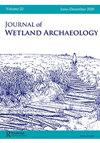重访格拉斯顿伯里湖村庄:铁器时代湿地定居点的多代理古环境调查
Q1 Arts and Humanities
引用次数: 8
摘要
摘要:格拉斯顿伯里湖村是欧洲最具标志性的史前晚期湿地定居点之一。自1907年以来,在格拉斯顿伯里湖村的核心地带进行了一次新的挖掘,这是第一次提供了对与场地占用相关的沉积物进行采样的机会,并为重建定居点建造前的环境条件提供了机会。介绍了一项详细的多学科研究的结果,包括古生态指标(鞘翅目、植物宏化石、硅藻、花粉、非花粉花粉形态)、地质考古方法(土壤微观形态),并得到了新的放射性碳测定的支持。研究结果突显了在湿地中建立定居点的艰难过程是如何实现的,无论是在结构内还是在结构周围的空间内。大型化石组合中的谷物储存证据,以及鞘翅目组合和非花粉孢粉形态中反映的定居点上动物的存在,加深了我们对定居点与邻近旱地之间相互作用的理解。本文章由计算机程序翻译,如有差异,请以英文原文为准。
Glastonbury Lake Village Revisited: A Multi-proxy Palaeoenvironmental Investigation of an Iron Age Wetland Settlement
ABSTRACT Glastonbury Lake Village is one of the most iconic late prehistoric wetland settlements in Europe. A new excavation in the core of Glastonbury Lake Village, for the first time since 1907, provided the opportunity for sampling of deposits associated with occupation of the site and for reconstructing the environmental conditions before the settlement was constructed. The results of a detailed multiproxy study are presented, including palaeoecological proxies (Coleoptera, plant macrofossils, diatoms, pollen, non-pollen palynomorphs), geoarchaeological methods (soil micromorphology), supported by new radiocarbon determinations. The results highlight how the difficult process of creating a settlement in a wetland was achieved, both within structures and in the spaces around them. Evidence for grain storage within the macrofossil assemblages, and the presence of animals on the settlement reflected in coleopteran assemblages and non-pollen palynomorphs has refined our understanding of the interaction between the settlement and the neighbouring dryland.
求助全文
通过发布文献求助,成功后即可免费获取论文全文。
去求助
来源期刊

Journal of Wetland Archaeology
Arts and Humanities-Archeology (arts and humanities)
CiteScore
1.40
自引率
0.00%
发文量
6
期刊介绍:
The Journal of Wetland Archaeology publishes a wide range of contributions in all fields of wetland archaeology. It includes scientific and methodological features, geoprospection, environmental reconstruction, wetland hydrology, cultural aspects of wetland archaeology, as well as conservation, site management, legislation, and site protection. All periods and all geographic regions are covered.
 求助内容:
求助内容: 应助结果提醒方式:
应助结果提醒方式:


